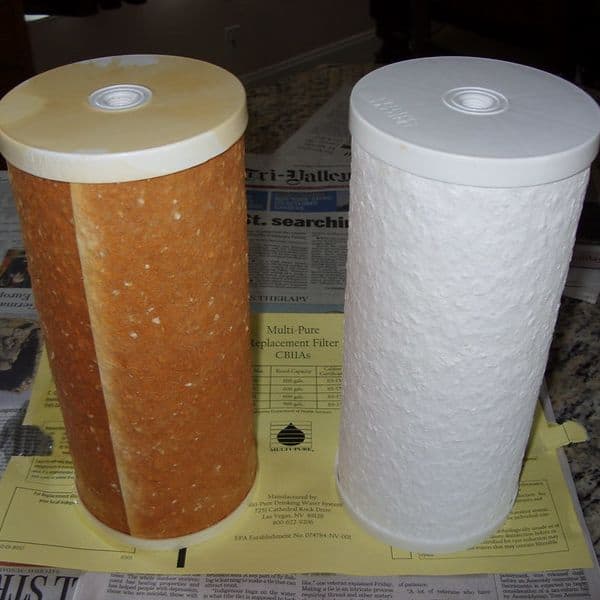How Do Iron Filters Work?
Iron filters are an essential piece of equipment for anyone dealing with iron contamination in their water supply. They remove dissolved iron particles in the water, which can cause problems including clogged pipes, stained clothes, and bad-tasting drinking water. Here are some of the best well water iron filters that you may want to check out.
Most iron filters work through a three-step process:
- pre-treatment or oxidation
- filtration
- backwash
Pre-treatment or Oxidation
The first step in the process involves pre-treatment or oxidation. This stage converts the dissolved ferrous iron into its oxidized form, known as ferric iron. This conversion is necessary because ferric iron can be easily filtered out of the water using various methods such as mechanical filtration, ion exchange, and activated carbon.
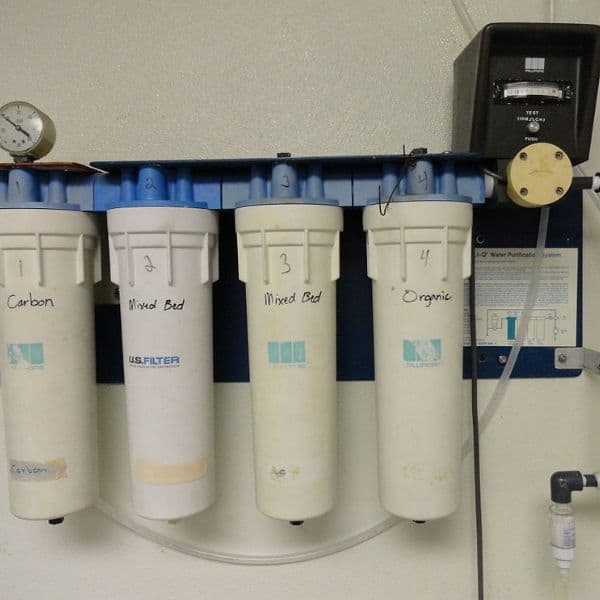
Filtration
The second step in the process is filtration, whereby water passes through different filter media such as manganese greensand, Birm media, catalytic carbon, or multi-media filters, which effectively trap and remove any iron particles in the water.
During filtration, water flows through a filter medium, which can be made up of sand, gravel, or special minerals specifically designed for removing iron. As the water passes through the filter medium, dissolved and suspended particles are trapped within its layers. The result is clean, clear, and safe-to-drink water free from rust stains or metallic taste.
Backwash
Finally, in the third step of this process, backwash occurs. Backwash is essential to maintaining filter efficiency by removing accumulated debris and ensuring proper flow rates. During backwashing, water flows reverse through the filter media and flushes out any trapped contaminants and excess media particles that may have broken down over time.
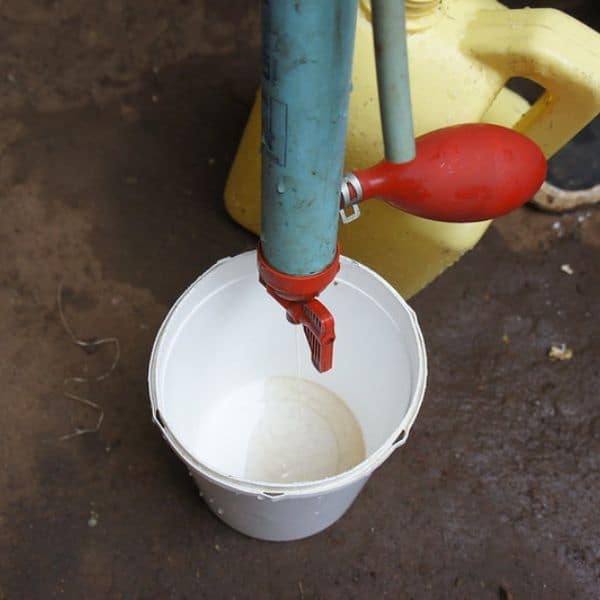
Signs That Your Well Water Contains a High Level of Iron
If you notice the following signs, it could be an indication that your well water has a high level of iron:
Metallic taste
If you’ve ever taken a sip of water from your well and noticed a metallic taste, it could indicate that your well water contains a high iron level. While iron is not considered harmful to human consumption, it can cause unpleasant tastes, odors, and stains on clothing or fixtures.
When there’s an excess amount of iron present in well water, it can lead to visible signs such as reddish-brown discoloration around drains and faucets. High levels of iron also encourage the growth of bacteria in wells which may produce foul-smelling odors.
Stained laundry and dishes
If your laundry and dishes come out of the wash with unsightly brown or orange stains, it’s a clear sign that your well water contains high iron levels. Not only is this aesthetically unappealing, but it can also damage your pipes and appliances.
While small amounts are generally harmless, high concentrations can lead to significant problems. When the water comes into contact with oxygen, the iron oxidizes and forms rust particles that cling to surfaces. These particles are what cause those unsightly stains on clothing and dishes.
Clogged plumbing
When the iron level in well water goes beyond a certain limit, it can cause problems with your plumbing system. Clogged plumbing is one of the most common symptoms of high iron levels in well water.
While clogged pipes may seem like an inconvenience at first, if left unchecked, they could lead to serious plumbing issues. If you notice these signs, testing iron in well water is essential so that you can take some precautionary measures such as using an iron filter, water softener, or hydrogen peroxide.
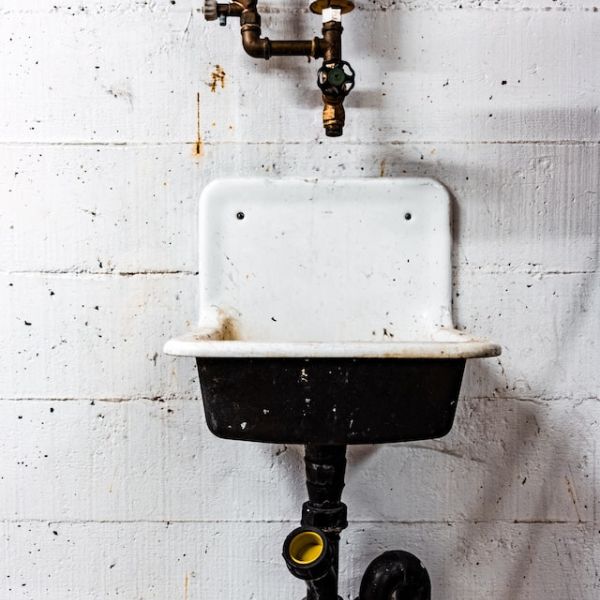
Forms of Iron in Well Water
Different forms of iron can be present in your well water, each with unique characteristics.
Ferrous iron
One type of iron that may be present is ferrous iron, also known as soluble or clear-water iron. This form of iron is not visible to the naked eye and usually leaves no visible stains or discolorations. However, drinking water can still create a metallic taste and odor.
Ferric iron
Another type of iron that may be present in well water is ferric iron or red-water iron. This form of iron can leave noticeable reddish stains on surfaces such as sinks or toilets, and it may cause problems with laundry due to staining on clothes.
Organic iron
Organic iron is another form of iron found in well water. This type of iron is bound to organic acids produced by microorganisms in soil and water. Organic iron is not harmful to human health but can cause aesthetic problems such as staining on clothes, dishware, and plumbing fixtures. Additionally, high levels of organic iron can lead to decreased water quality.
Colloidal iron
Colloidal iron is a type of suspended particle that is not visible to the naked eye but is present in higher concentrations than dissolved iron. Colloidal iron particles are often brown or yellow and can give well water an unpleasant taste and odor.
Treating colloidal iron in well water requires specific filtration methods such as coagulation, flocculation, or oxidation, followed by sedimentation or filtration through sand or activated carbon filters.

Benefits of Iron Filters
Improved water aesthetics
One of the biggest benefits of using iron filters is that they can significantly improve the aesthetics of your water. Iron in your water can cause several issues that affect its appearance, such as discoloration and staining. You can enjoy clear and clean-tasting water by using an iron filter for your home’s drinking water supply.
Prevent clogged plumbing
Iron filters last longer and help to keep your plumbing system functioning well. Using these devices ensures that you won’t have to worry about clogged pipes, which can be a major headache for homeowners. Iron filters are designed to remove iron and other impurities from your water supply, preventing the buildup of rust and sediment in your pipes.
Prevent iron stains
Iron filters can remove unwanted elements from your water supply, preventing the formation of unsightly iron stains. Iron filters use specialized media to trap iron particles before entering your home’s plumbing system. As water flows through the filter media bed, rust, sediment, and other contaminants are trapped within the media’s layers. The result is clean water that doesn’t stain or leave behind residue.
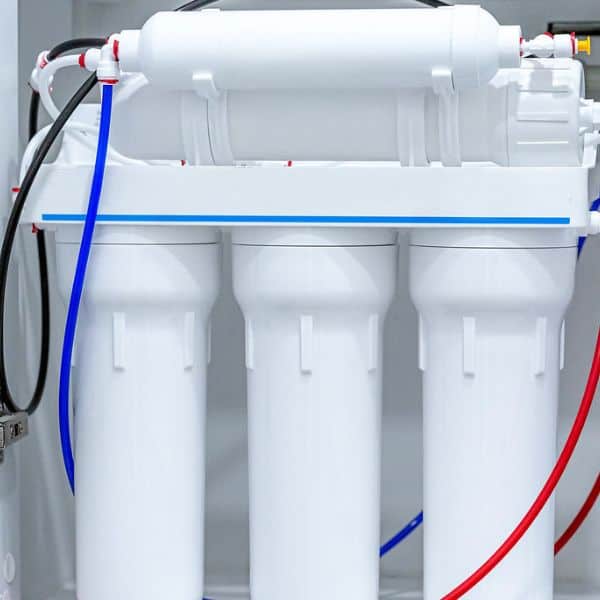
Effective Iron Removal Systems
Various types of iron removal systems are available in the market with different filtration methods.
- One such method is using aeration tanks that oxidize the iron and allow it to be filtered out.
- Another popular method is using ion exchange resins that swap iron ions out for other ions like sodium or potassium.
- Other options include reverse osmosis and activated carbon filters.
Choosing an iron removal system is important based on your needs and budget.
Conclusion
Iron water filters effectively remove iron, manganese, and hydrogen sulfide from drinking water. Most iron filters work through a three-step process: pre-treatment or oxidation, filtration, and backwash. If your water tastes metallic or has an orange or brown color, you may want to consider investing in an iron filter.
